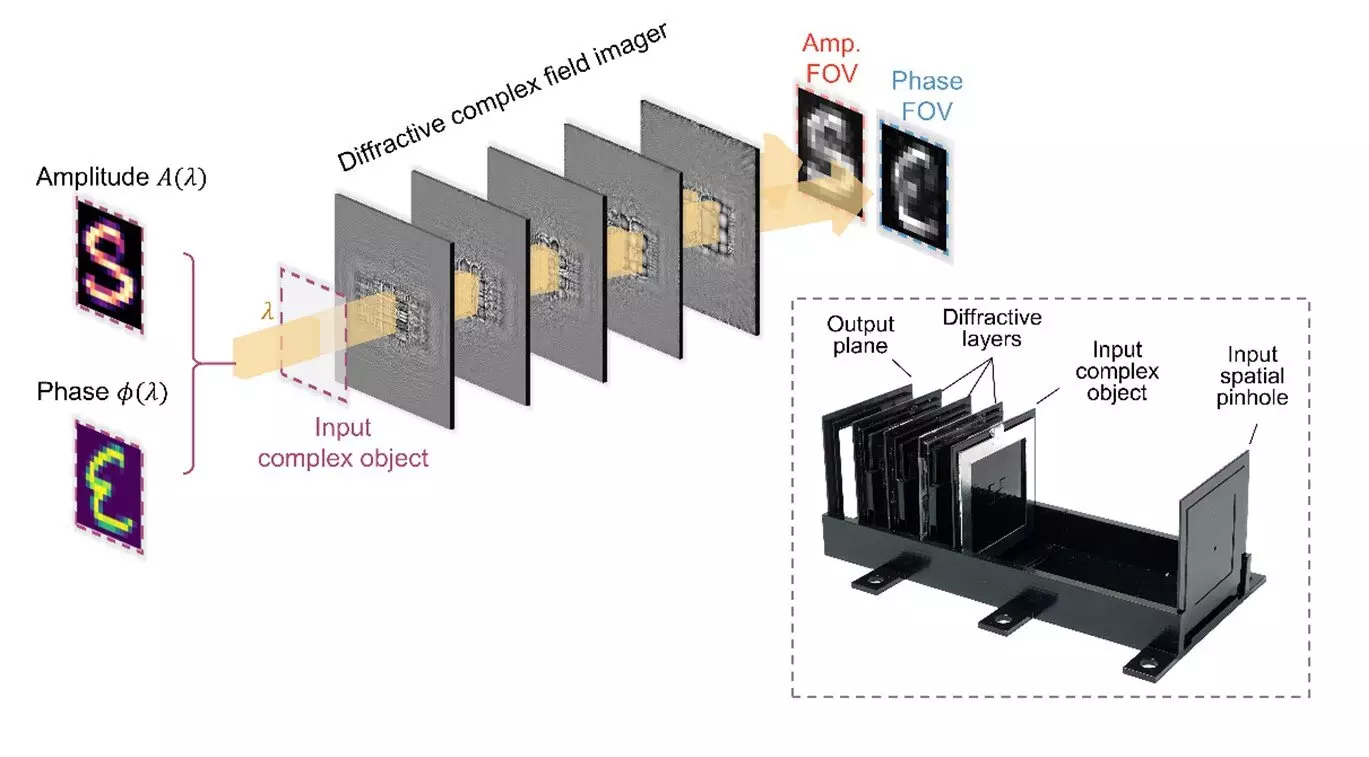Optical imaging technology has reached a significant milestone with the development of a new all-optical complex field imager by researchers at the University of California, Los Angeles (UCLA). This innovative device is capable of capturing both the amplitude and phase information of optical fields without the need for digital processing. The potential impact of this breakthrough extends across various fields, including biomedical imaging, security, sensing, and material science.
Traditionally, optical imaging technologies have relied on intensity-based sensors that only capture the amplitude of light, neglecting the critical phase information. The phase information of optical fields provides valuable insights into structural properties such as absorption and refractive index distributions, essential for detailed sample analysis. The complexity of capturing phase information previously involved interferometric or holographic systems combined with iterative phase retrieval algorithms, resulting in increased hardware complexity and computational demand.
Led by Professor Aydogan Ozcan, the team at UCLA developed a novel complex field imager that overcomes these limitations. This groundbreaking device utilizes deep learning-optimized diffractive surfaces to modulate incoming complex fields, creating two independent imaging channels that transform the amplitude and phase of the input fields into intensity distributions on the sensor plane. By employing spatially engineered diffractive surfaces, the imager can directly measure the amplitude and phase profiles of input complex fields without the need for digital reconstruction algorithms.
The compact and efficient design of the complex field imager opens up a wide range of applications across various industries. In the biomedical field, this technology can revolutionize real-time, non-invasive imaging of tissues and cells, providing critical insights during medical procedures. Its integration into endoscopic devices and miniature microscopes can advance point-of-care diagnostics and intraoperative imaging. Furthermore, in environmental monitoring, the imager’s portability can facilitate the development of lab-on-a-chip sensors for rapid detection of microorganisms and pollutants, streamlining the process of environmental assessment. Industrial applications can also benefit from this technology, as it offers rapid inspection of materials without the need for bulky equipment or extensive computational resources, making it an invaluable tool for quality control and material analysis.
The development of the all-optical complex field imager represents a significant advancement in optical imaging technology. By enabling the direct capture of amplitude and phase information without digital processing, this innovation simplifies the imaging process and expands the scope of potential applications. As researchers continue to enhance and expand upon this technology, its impact is expected to grow, offering new opportunities for scientific research and practical applications across various fields.


Leave a Reply